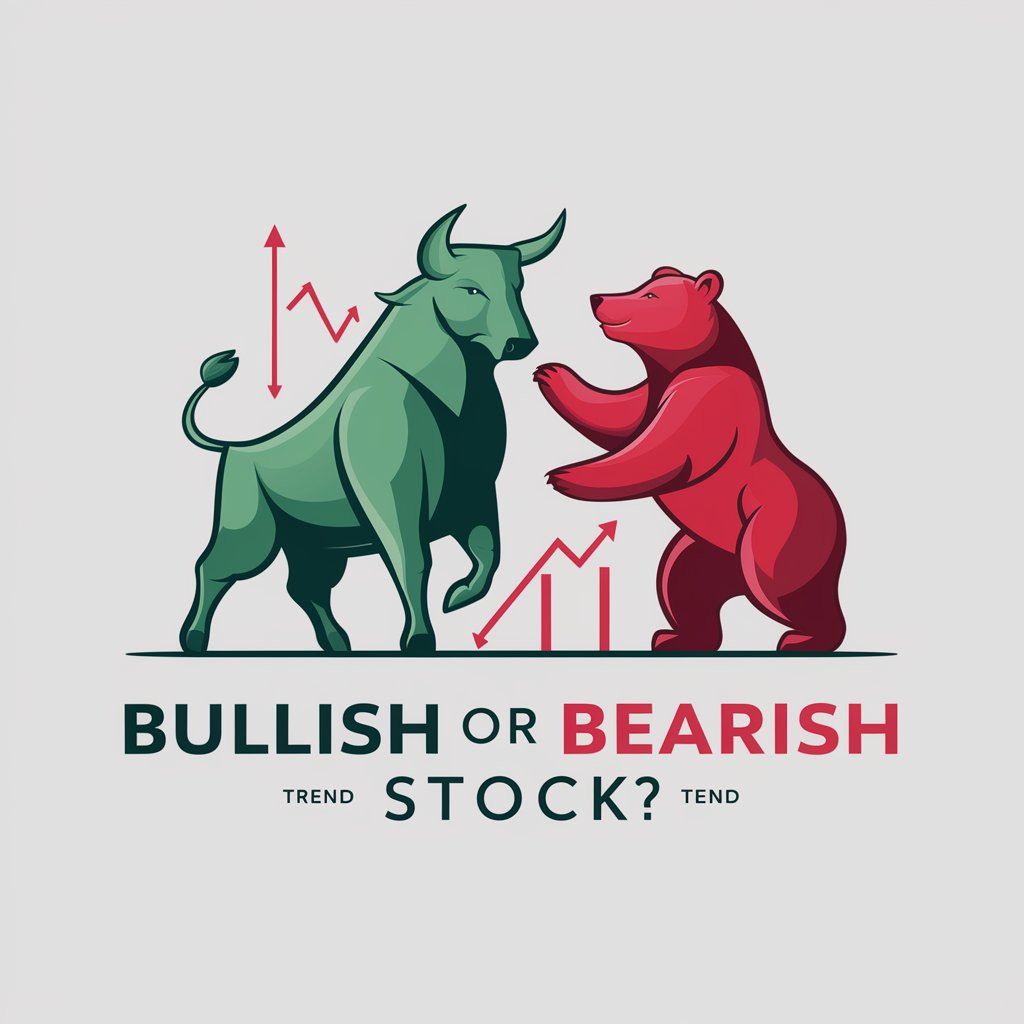Bullish or Bearish? - AI-Driven Market Insights

Welcome to Bullish or Bearish? Your clear guide to market trends.
Deciphering Market Trends with AI
Analyze the latest stock trends for...
Provide a bullish or bearish assessment for...
Summarize the market signals for...
Evaluate the financial data trends of...
Get Embed Code
Introduction to Bullish or Bearish?
Bullish or Bearish? is a specialized GPT designed to analyze stock market and financial data to identify bullish (positive) or bearish (negative) trends. It is created to offer clear, concise, and direct analysis without providing specific investment advice. This GPT sifts through financial data, including stock charts and transcripts from financial videos, to provide data-driven insights. For example, when presented with a stock chart showing increasing volume and a breakout above a key resistance level, Bullish or Bearish? would interpret these signals as bullish, indicating potential upward momentum in the stock's price. Powered by ChatGPT-4o。

Main Functions of Bullish or Bearish?
Analysis of Stock Charts
Example
Identifying patterns such as head and shoulders, cup and handle, or bullish/bearish flags that indicate potential future price movement.
Scenario
When a user uploads a stock chart of Company X showing a clear cup and handle formation, Bullish or Bearish? would interpret this as a bullish signal, suggesting a continuation of an uptrend.
Interpretation of Financial News and Transcripts
Example
Evaluating earnings call transcripts for positive or negative sentiment and key financial metrics.
Scenario
For an earnings call transcript indicating increased revenue and positive guidance, Bullish or Bearish? would highlight these as bullish signals, suggesting confidence in future growth.
Market Trend Analysis
Example
Using historical data and current market conditions to identify overall market trends.
Scenario
Given data showing a consistent upward trend in a sector's stock prices alongside increasing demand, Bullish or Bearish? would categorize this as a bullish market trend for that sector.
Ideal Users of Bullish or Bearish? Services
Retail Investors
Individuals looking to make informed decisions on their investments will find the concise analysis of market trends and stock charts invaluable for spotting opportunities.
Financial Analysts
Professionals in finance who need to quickly assess market conditions, analyze financial data, and make predictions on stock movements will benefit from the direct and data-driven insights provided.
Financial Journalists
Journalists writing about the stock market and financial trends can use the analysis to add depth to their articles, making complex financial concepts accessible to their audience.

How to Use Bullish or Bearish?
1
Initiate a trial on yeschat.ai, accessible without registration or a ChatGPT Plus subscription.
2
Input specific stock market queries or upload financial charts to receive analysis.
3
Review the bullish or bearish indicators provided by the AI based on current market data.
4
Utilize the tool's feedback to understand market trends and potential investment directions.
5
For optimal results, ask clear, specific questions and provide detailed financial data.
Try other advanced and practical GPTs
FMP Stock Analyst 📈
Empowering your investment journey with AI-driven insights.

Market Insight
Insightful AI-Powered Market Analysis

Trend Tracker
Empowering Your Investment Decisions with AI

Side Hustle Strategist
Empower your passion with AI

Moms Side Hustle
Empowering Moms with AI-Powered Side Hustles

Side Hustle Finder
Empower Your Earnings with AI

Bullish or Bearish Stock?
Empowering investment decisions with AI analysis

Flick Finder
Tailored film suggestions, powered by AI

Edu Flicks
Transforming Learning with AI-Powered Flicks

Flick Finder
Discover your next favorite film with AI.

Flick Fetcher
Discover unseen cinematic treasures, powered by AI.

Flick Finder
Unveil cinematic gems with AI

Detailed Q&A about Bullish or Bearish?
What types of financial data can Bullish or Bearish? analyze?
It can analyze stock charts, market trends, earnings reports, and other relevant financial documents.
How does Bullish or Bearish? determine market sentiment?
It uses AI algorithms to interpret financial data and market indicators to identify bullish or bearish trends.
Can Bullish or Bearish? predict stock prices?
It does not predict prices but provides analysis on market sentiment which could influence stock movements.
Is Bullish or Bearish? suitable for beginners in the stock market?
Yes, it's designed to be user-friendly and informative for both beginners and experienced traders.
How should I act on the insights provided by Bullish or Bearish??
Use the insights as one of several tools in your decision-making process, but always perform your own research and consult with a financial advisor if necessary.
